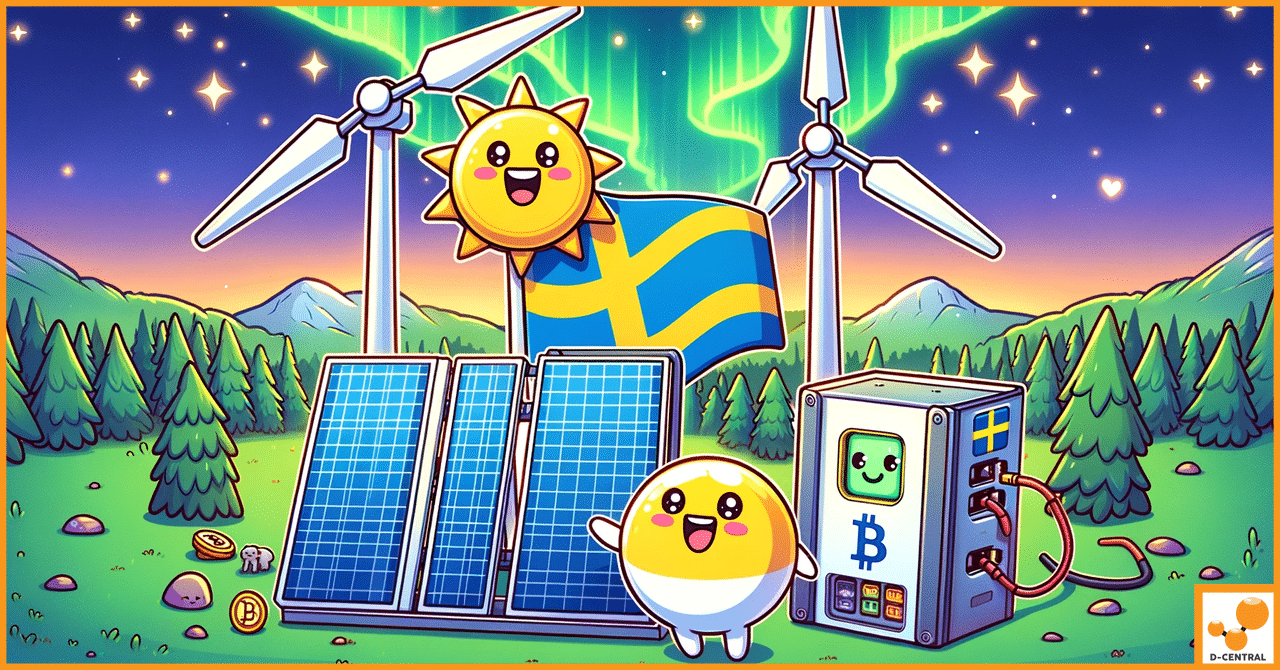
The Evolution of Mining: From Bitcoin Mining to Global Hashing Renaissance
In the realm of cryptocurrencies and digital technology, hashing holds a pivotal role. Hashing is a process that transforms any
4479 Desserte Nord Autoroute 440, Laval, QC H7P 6E2

Bitcoin mining, the process by which new bitcoins are entered into circulation and transactions are confirmed across the network, has faced significant environmental criticism. Detractors point to the substantial energy consumption of mining activities, emphasizing the carbon footprint associated with the use of fossil fuels. Concerns revolve around the potential for exacerbating climate change, with many critics highlighting the contrast between the digital currency’s innovative nature and its reliance on traditional, and often environmentally harmful, energy sources. This section will delve into the specifics of these criticisms, addressing common arguments and the complexities of measuring the true environmental impact of Bitcoin mining.
In response to these environmental concerns, a novel approach has emerged, proposing the use of surplus renewable energy for Bitcoin mining. This concept capitalizes on the excess capacity of renewable energy sources, such as wind, solar, and hydro, which can often produce more electricity than is immediately consumed. Due to the difficulties in storing this surplus energy, it can be rendered more valuable and less wasteful by being directed towards Bitcoin mining operations. This section will introduce the mechanics of how surplus renewable energy can be integrated into mining practices and the potential benefits this integration holds for both the environment and the energy sector.
One practical embodiment of this approach is the initiative taken by Genesis Digital Assets Limited (GDA), a forward-thinking Bitcoin mining and data center company. GDA has recently opened a new data center in Sweden, a country known for its commitment to renewable energy, particularly its extensive hydroelectric power generation. The choice of location is strategic, leveraging the country’s renewable energy surplus to power Bitcoin mining operations. This case study will serve as a cornerstone for the article, exemplifying how the theoretical benefits of renewable energy use in Bitcoin mining are being realized in practice. We will explore GDA’s Swedish operation as a model of environmentally conscious mining that aligns with the global push for sustainable energy solutions.
Sweden, Finland, and Norway are European frontrunners in the development and utilization of renewable energy sources. These countries have invested heavily in renewable technologies, with Sweden’s hydroelectric plants, Finland’s wind farms, and Norway’s hydropower stations leading the charge. These investments are driven by robust government policies aimed at reducing carbon emissions and encouraging sustainable energy use. As a result, these nations often produce a surplus of clean energy, particularly during periods of low demand or high generation. This section will provide a detailed overview of the renewable energy landscapes in these countries, the contributions of each type of renewable source to their energy mixes, and the policies that have supported this growth.
The surge in renewable energy production has introduced new challenges regarding the storage and distribution of electricity. Renewable sources like wind and solar power are intermittent, meaning they do not produce energy consistently. This variability leads to periods of surplus where the energy generated exceeds immediate demand. Storing this surplus energy is not always feasible or economical due to technological and infrastructural limitations. Additionally, the remoteness of some renewable energy sites makes it difficult to distribute this power efficiently to where it is needed. This section will discuss the technical and economic challenges associated with surplus renewable energy, the current solutions in place, and the gaps that still need to be addressed.
Genesis Digital Assets Limited (GDA) has positioned itself as a key player in the Bitcoin mining industry by taking an innovative approach to energy use. The company has recognized the opportunity to harness surplus renewable energy to power its mining operations. GDA’s strategy involves setting up data centers in regions with an abundance of clean energy and low electricity costs. This not only maximizes the economic efficiency of their mining operations but also aligns with a broader commitment to sustainability. In this section, we will introduce GDA’s mission, its operational model, and how it integrates into the global Bitcoin mining ecosystem. We will also touch upon the company’s history, its achievements in the field, and its plans for future expansion, particularly in energy-rich and environmentally conscious regions like Sweden.
Genesis Digital Assets Limited has embarked on a significant expansion into the Swedish market with the opening of a new data center. This facility is a testament to GDA’s commitment to sustainability and innovation within the Bitcoin mining industry. The data center boasts state-of-the-art infrastructure designed to optimize the mining process while minimizing its environmental impact. Equipped with the latest ASIC miners, the facility is engineered to maximize hash rate efficiency and energy usage. This section will delve into the specifics of the data center’s design, the technology being utilized, and how it integrates with Sweden’s renewable energy grid to ensure a reduced carbon footprint.
The decision to locate the new GDA data center in Sweden was no coincidence. Sweden’s abundant hydroelectric power sources provide a reliable and clean energy supply that is crucial for energy-intensive operations like Bitcoin mining. The data center’s proximity to these sources ensures a steady stream of low-cost, renewable energy, enabling GDA to maintain a competitive edge in the market while adhering to its environmental principles. This section will explore how the proximity to hydroelectric power not only benefits GDA’s operational efficiency but also supports the broader goal of promoting sustainable practices in the cryptocurrency mining sector.
Utilizing Sweden’s renewable energy surplus has numerous operational benefits for GDA. Access to this surplus allows for more predictable and lower energy costs, which translates to increased profitability and a more resilient business model against the volatility of both the energy and cryptocurrency markets. Moreover, the use of surplus energy that would otherwise be wasted aligns with global efforts to combat climate change, bolstering GDA’s reputation as a leader in responsible Bitcoin mining. This section will further analyze the operational advantages, including enhanced energy security, reduced operational risks, and alignment with global sustainability targets, that GDA experiences by tapping into Sweden’s renewable energy surplus.
The integration of renewable energy into Bitcoin mining marks a significant shift from traditional methods that rely heavily on fossil fuels. This section will provide a comparative analysis of the two approaches, highlighting the differences in carbon emissions, energy efficiency, and long-term sustainability. It will examine the potential for renewable energy to mitigate the environmental concerns associated with Bitcoin mining, such as greenhouse gas emissions and fossil fuel depletion. The analysis will also consider lifecycle assessments of mining equipment and the potential for full integration of renewable sources, offering a comprehensive view of the environmental impact of this paradigm shift.
Renewable energy producers stand to gain economically from the burgeoning relationship with the Bitcoin mining industry. The ability to sell surplus energy to mining operations provides a consistent and reliable revenue stream, which can make renewable projects more financially viable and attractive to investors. This section will explore how this demand from miners can lead to greater investment in renewable infrastructure, potentially lowering costs and accelerating the transition to clean energy. Additionally, it will discuss how this new revenue model could affect the broader energy market, potentially leading to more competitive pricing and innovation in energy production and storage technologies.
The establishment of mining operations like GDA’s in Sweden has a ripple effect on local economies and energy markets. By providing a steady demand for surplus energy, mining centers can help stabilize local energy markets and provide a buffer against the volatility associated with renewable production. Furthermore, such operations often bring job creation, infrastructure development, and increased tax revenues to the regions they inhabit. This section will assess the broader economic impact of renewable-powered Bitcoin mining, from job creation to increased energy independence, and how it can contribute to the economic resilience and growth of local communities.
Contrary to prevailing narratives, Bitcoin mining can play a supportive role in renewable energy initiatives. This section will tackle prevalent myths, such as the notion that Bitcoin mining is inherently unsustainable, by presenting evidence of its compatibility with renewable energy sources. It will highlight how mining can act as a ‘buyer of last resort’ for surplus energy, thereby incentivizing the expansion of renewable energy projects. The discussion will also address the role of mining in improving the economics of renewable energy through demand response programs and by providing a stable financial return for otherwise curtailed energy.
Real-world examples serve as powerful testaments to the positive environmental impact of renewable energy-integrated Bitcoin mining. This section will present a series of case studies, including GDA’s Swedish operation, and other mining entities worldwide that have successfully utilized renewable energy sources. It will showcase how these operations are not only reducing the carbon footprint associated with mining but are also pioneering new ways to enhance the efficiency and sustainability of the cryptocurrency sector.
Scaling renewable energy-powered Bitcoin mining poses several challenges that need to be addressed to ensure sustainable growth. One of the primary challenges is the geographic limitation of renewable energy sources, which are often located far from the mining operations that need them. Another challenge is the intermittent nature of renewable energy, which can lead to unpredictability in mining operations. Additionally, the current infrastructure for renewable energy may not be sufficient to support large-scale mining activities. There is also the financial aspect, where the initial investment for renewable energy-powered setups can be significant, potentially deterring smaller mining operations. This section will delve into these challenges in more detail, examining their implications for the future of sustainable Bitcoin mining.
Despite the challenges, there are substantial opportunities for innovation within the Bitcoin mining industry. Technological advancements in energy storage could alleviate the issues caused by the intermittent supply of renewables, allowing for more consistent mining operations. There’s also potential for developing more energy-efficient mining hardware, reducing the overall energy demand of the mining process. Innovations in cooling systems and the repurposing of waste heat from mining operations can further enhance energy efficiency. The mining industry could also explore new business models, such as partnerships with renewable energy providers or the development of decentralized mining networks. This section will explore these opportunities and how they could shape the future of Bitcoin mining.
The future looks promising for the integration of renewable energy into Bitcoin mining. As public awareness and regulatory pressure increase, there is a growing impetus for the industry to adopt more sustainable practices. The economic benefits, coupled with technological innovations, are likely to drive the adoption of renewables in mining operations. Moreover, as renewable energy becomes more affordable and accessible, it’s expected that an increasing number of mining operations will turn to green energy sources. This shift could not only improve the public perception of Bitcoin mining but also contribute to the global transition towards sustainable energy solutions. This section will provide a forecast for the adoption of renewable energy in Bitcoin mining, considering current trends, technological developments, and regulatory landscapes.
Education is a powerful tool in shifting the dialogue around Bitcoin mining and its environmental impact. By disseminating accurate information about how Bitcoin mining can align with renewable energy initiatives, the industry can counteract misconceptions and highlight its efforts in promoting sustainability. It’s essential to communicate the complexities of energy use in mining operations and the potential for positive change to a wider audience. This includes engaging with stakeholders, policymakers, and the general public to foster a more nuanced understanding of the sector’s environmental footprint.
The synergy between renewable energy and Bitcoin mining holds the potential to redefine the industry’s future. As demonstrated by companies like Genesis Digital Assets Limited in Sweden, there is a clear pathway to greener mining practices that also bolster the business model of Bitcoin mining. The shift to renewables is not only a response to environmental concerns but also a strategic move to secure the long-term sustainability and profitability of mining operations. The momentum is building, and the sector stands at the cusp of a revolution that could see renewable energy become the cornerstone of Bitcoin mining.
The journey towards a fully sustainable Bitcoin mining industry is ongoing, and there is much work to be done. The sector requires continued research into energy-efficient technologies, improved energy storage solutions, and innovative mining processes that minimize environmental impact. Investment in these areas is crucial and should be encouraged. Stakeholders across the industry, including companies like D-Central Technologies, must play their part in fostering sustainable practices. Collaborative efforts between the tech and energy sectors, along with supportive regulatory frameworks, will be pivotal in advancing this cause. As such, this paper serves as a call to action for all
DISCLAIMER: D-Central Technologies and its associated content, including this blog, do not serve as financial advisors or official investment advisors. The insights and opinions shared here or by any guests featured in our content are provided purely for informational and educational purposes. Such communications should not be interpreted as financial, investment, legal, tax, or any form of specific advice. We are committed to advancing the knowledge and understanding of Bitcoin and its potential impact on society. However, we urge our community to proceed with caution and informed judgment in all related endeavors.
Related Posts

In the realm of cryptocurrencies and digital technology, hashing holds a pivotal role. Hashing is a process that transforms any

Bitcoin mining, a cornerstone of the cryptocurrency world, is a fascinating blend of technology and economics. It’s not just about

In the dynamic world of cryptocurrency mining, Antminer users face the critical task of maintaining their mining hardware to ensure